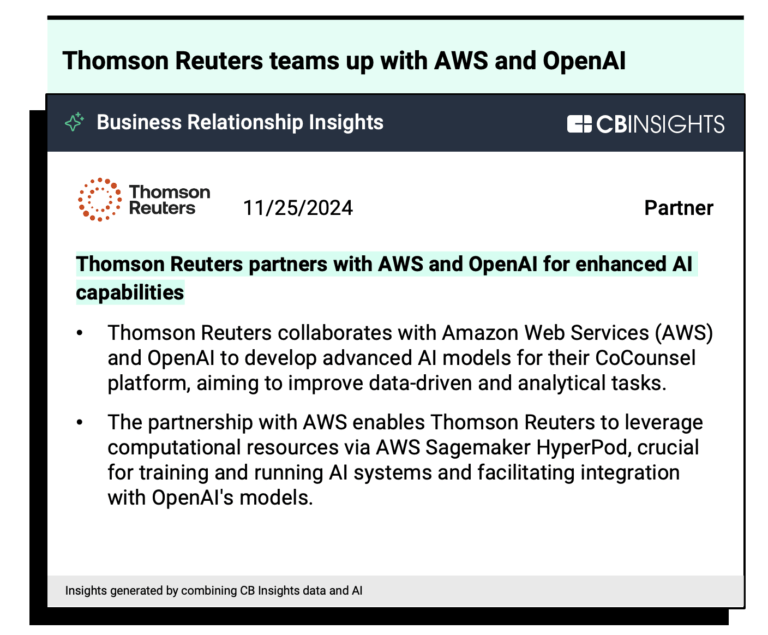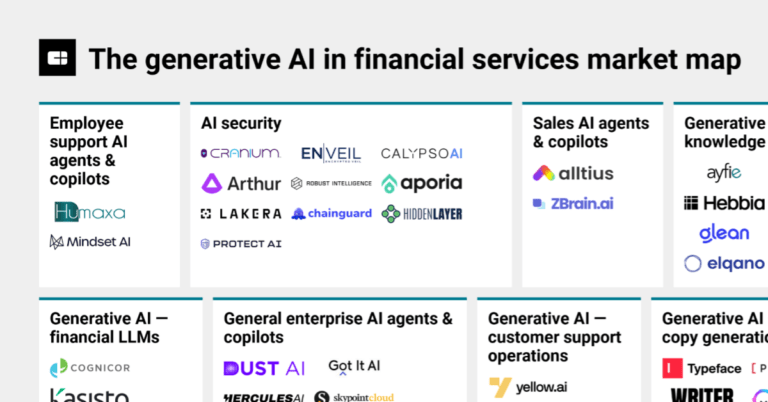
WRITER
Founded Year
2015Stage
Series C | AliveTotal Raised
$344.68MValuation
$0000Last Raised
$200M | 1 yr agoRevenue
$0000Mosaic Score The Mosaic Score is an algorithm that measures the overall financial health and market potential of private companies.
+3 points in the past 30 days
About WRITER
Writer operates as a full-stack generative artificial intelligence (AI) platform focused on the development of AI applications and agents for various business sectors. The company provides tools for building, activating, and supervising AI agents, using its family of large language models (LLMs) and knowledge graph technology. Writer's solutions serve enterprises in industries such as financial services, healthcare, retail, and technology, aiming to improve operational efficiency and decision-making processes. WRITER was formerly known as Qordoba. It was founded in 2015 and is based in San Francisco, California.
Loading...
WRITER's Product Videos
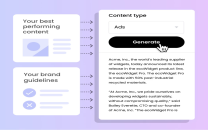

ESPs containing WRITER
The ESP matrix leverages data and analyst insight to identify and rank leading companies in a given technology landscape.
The AI agent builder platforms market offers no-code and low-code solutions for business users to create and deploy AI agents without programming expertise. These platforms provide drag-and-drop interfaces, pre-built templates, and visual workflow builders for automating tasks like customer support, scheduling, and lead qualification. Key features include integrations with business tools, multi-ch…
WRITER named as Leader among 15 other companies, including Zapier, Salesforce, and Glean.
WRITER's Products & Differentiators
Palmyra LLMs
WRITER's state-of-the-art enterprise LLMs to power agent reasoning, actions, memory, and learning. These include both large general-purpose reasoning models as well as fine-tuned models for domains such as finance & healthcare. WRITER's models are secure, transparently built, multimodal, and top-ranked on industry benchmarks. Customers can audit, test, and fine-tune our models.
Loading...
Research containing WRITER
Get data-driven expert analysis from the CB Insights Intelligence Unit.
CB Insights Intelligence Analysts have mentioned WRITER in 17 CB Insights research briefs, most recently on Oct 3, 2025.
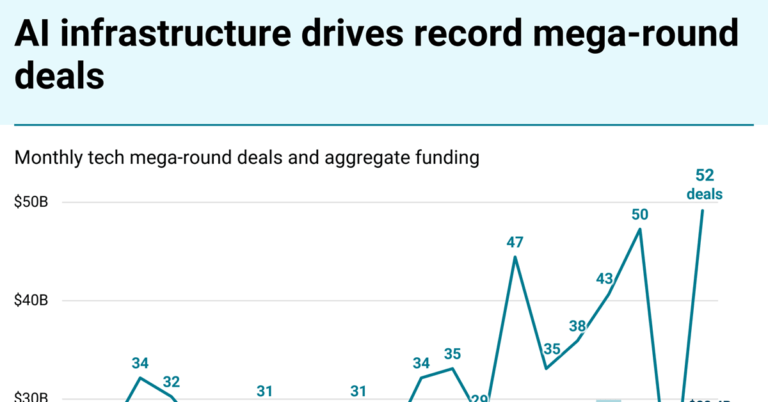
Oct 3, 2025 report
Dual AI engines: LLMs and optimizers sweep September mega-round funding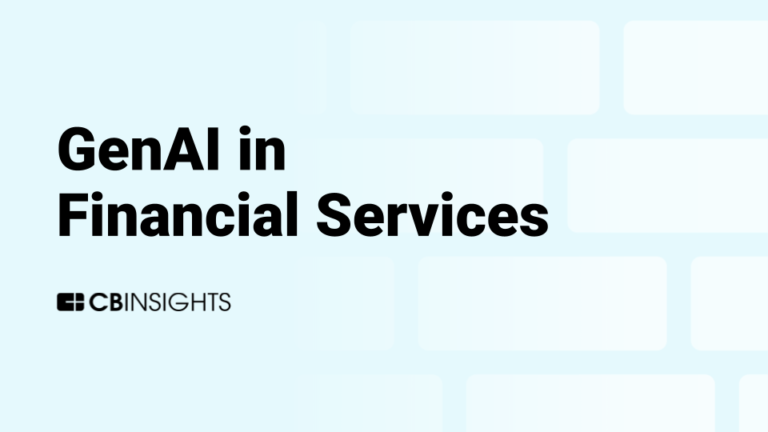
Aug 29, 2025 report
Book of Scouting Reports: Generative AI in Financial Services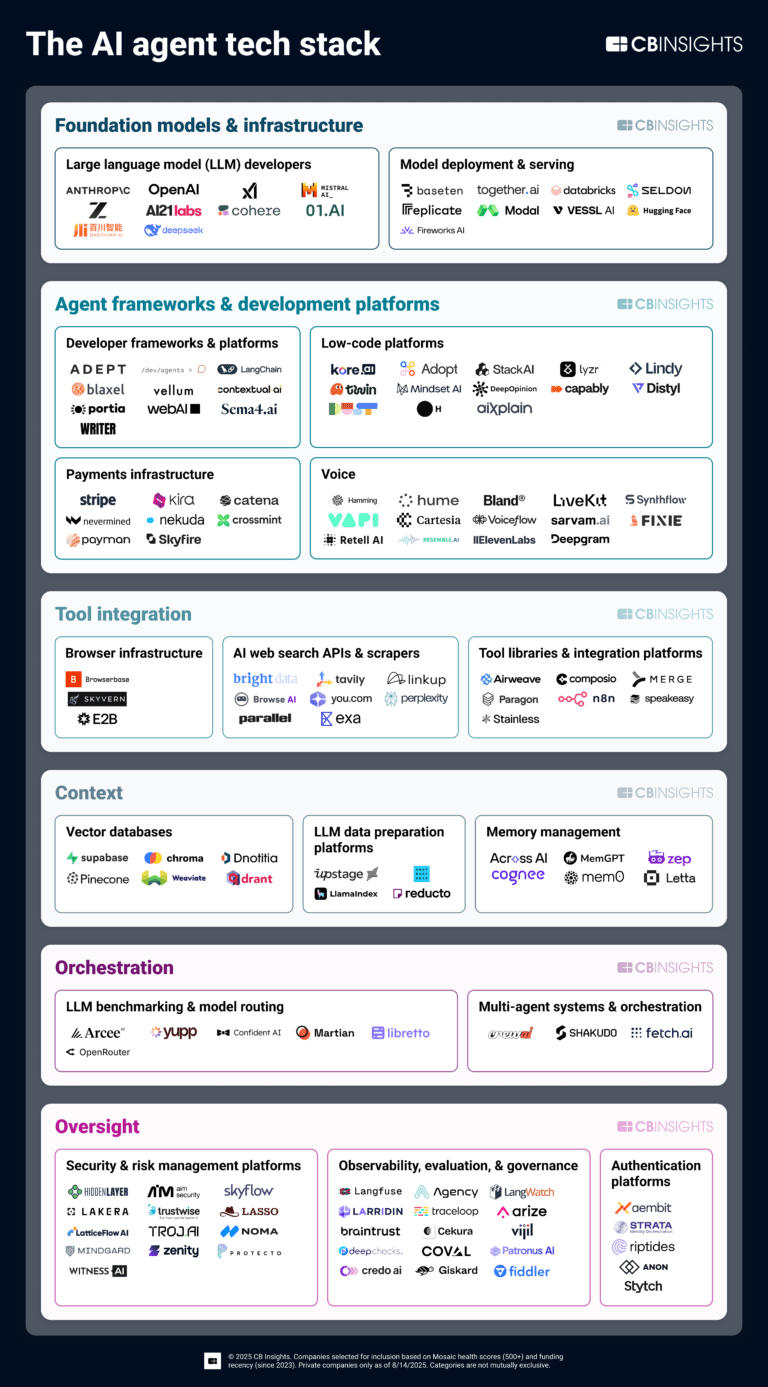
Aug 22, 2025
The AI agent tech stack
Oct 17, 2024
The generative AI for e-commerce market map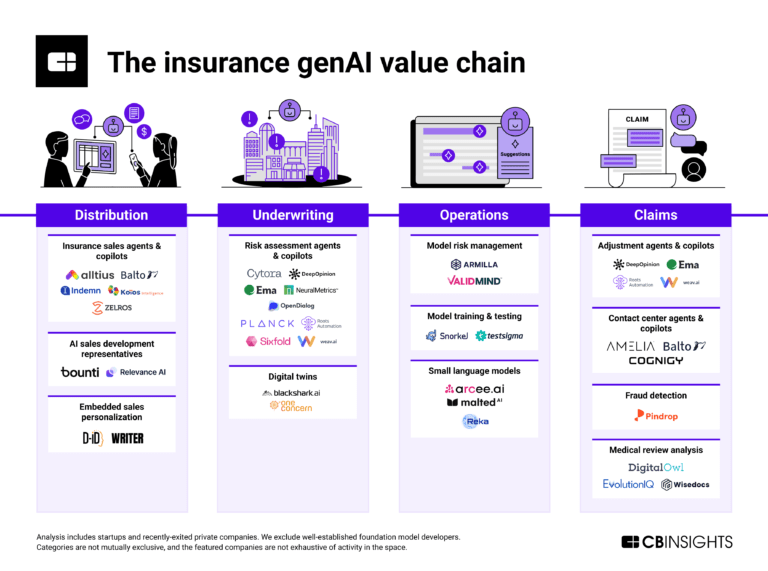
Oct 11, 2024
How genAI is reshaping the insurance value chainExpert Collections containing WRITER
Expert Collections are analyst-curated lists that highlight the companies you need to know in the most important technology spaces.
WRITER is included in 9 Expert Collections, including Unicorns- Billion Dollar Startups.
Unicorns- Billion Dollar Startups
1,297 items
Artificial Intelligence (AI)
37,256 items
Companies developing artificial intelligence solutions, including cross-industry applications, industry-specific products, and AI infrastructure solutions.
Digital Content & Synthetic Media
2,388 items
The Synthetic Media collection includes companies that use artificial intelligence to generate, edit, or enable digital content under all forms, including images, videos, audio, and text, among others.
Retail Media Networks
143 items
Generative AI
2,951 items
Companies working on generative AI applications and infrastructure.
AI 100 (2024)
100 items
WRITER Patents
WRITER has filed 3 patents.

Application Date | Grant Date | Title | Related Topics | Status |
|---|---|---|---|---|
8/29/2019 | 7/19/2022 | Natural language processing, Computational linguistics, Machine learning, Artificial intelligence, Tasks of natural language processing | Grant |
Application Date | 8/29/2019 |
|---|---|
Grant Date | 7/19/2022 |
Title | |
Related Topics | Natural language processing, Computational linguistics, Machine learning, Artificial intelligence, Tasks of natural language processing |
Status | Grant |
Latest WRITER News
Nov 8, 2025
transformation that now saves 2,400 hours monthly and creates what CMO Don McGuire calls "happier employees who are more productive, more creative, and more satisfied with their jobs." On November 4th at San Francisco's Fairmont Hotel, Summers shared his journey at Writer's AI Leaders Forum alongside executives from e.l.f. Beauty, Marriott International, Blue Federal Credit Union, and several others. What these leaders revealed wasn't AI vaporware - it was the operational reality of companies capturing compounding advantages while the majority of enterprises today remain stuck in pilot purgatory. The contrast couldn't be starker. New research led by Boston Consulting Group's Janet Balis and Lauren Wiener with the Marketing and Media Alliance (MMA)'s Vas Bakopoulos reveals that only 15% of AI initiatives operate cross-functionally at scale to deliver enterprise value. Most remain trapped in individual functions or stuck in pilot mode. The remaining 85% are failing not because of insufficient technology, but because they're making what Writer CEO May Habib calls a “category error” - treating AI transformation like previous IT rollouts and delegating it to departments that can't redesign business processes. The 42% Problem And The C-Suite Disconnect Habib shared a statistic that should terrify every executive: "Earlier this year, we did a survey of 800 Fortune 500 C-suite executives. 42% of them said AI is tearing their company apart." The diagnosis challenges conventional wisdom about AI implementation. "When generative AI started showing up, we turned to the old playbook," Habib explained. "We turned to IT and said, 'Go figure this out.'" That approach fails because AI fundamentally inverts how enterprises operate. "For 100 years, enterprises have been built around the idea that execution is expensive and hard," Habib said. "The enterprise built complex org charts, complex processes, all to manage people doing stuff." AI flips that model. "Execution is going from scarce and expensive to programmatic, on-demand and abundant." When execution becomes abundant, the bottleneck shifts from coordination to design - requiring business leaders, not IT departments, to drive transformation. "With AI technology, it can no longer be centralized. It's in every workflow, every business," Habib said. "It is now the most important part of a business leader's job. It cannot be delegated." Inversion One: Empower Frontlines, Not Executive Suites The companies succeeding at AI made three inversions of conventional wisdom. The first: pushing control to frontline workers instead of centralizing it in executive suites or IT departments. At e.l.f. Beauty - ranked #3 on Fortune's fastest growing companies list with 27 consecutive quarters of net sales growth - Chief Digital Officer Ekta Chopra manages 85 different agentic AI pilots with an approach that captures this shift: "We want to give the tools in the hands of the people. This is not an IT project." Chopra established a cross-functional AI steering committee including legal, marketing, and R&D leaders. The company deploys “power users” - the employees most eager to use AI - as testers during pilot phases, with goals moving most agents into production within six months. Her philosophy combines bottom-up AI literacy building with top-down resources and strategy, orchestrating from the C-suite without becoming a bottleneck. BCG's research validates this approach: 70% of AI implementation challenges stem from people and process issues, 20% from technology problems, and only 10% involve AI algorithms - despite algorithms consuming disproportionate organizational time. Additionally, agentic AI is expected to handle more than one-fifth of marketing's total workload within two to three years, making frontline empowerment increasingly critical. At Qualcomm, Summers' journey from pandemic curiosity to driving AI adoption across marketing exemplifies frontline empowerment. His playbook: start with personal productivity tools to build user confidence before expanding to strategic initiatives. The results speak clearly. After Summers conducted his initial Writer pilot, 100% of the users wanted to adopt the platform full-time. Today, 85% engage with Writer weekly, with 60% using it multiple times per week. The company scaled from 50 people to more than 100 custom AI agents driving measurable ROI. But the 2,400 hours saved monthly isn't about doing the same work faster - it's about frontline employees with deep domain expertise deploying AI directly on high-value problems that previously required layers of approval and technical intervention. Inversion Two: Governance As Velocity, Not Control The CEOs who say AI is tearing their companies apart share a common problem: their executives are literally speaking different languages about the same technology. BCG's research exposes the dysfunction in stark numbers. CMOs prioritize personalized interactions (ranked #1 by 57% of marketing leaders) and marketing effectiveness (45%). CEOs focus on enterprise value, growth, and new business models. CTO/CIOs measure success through cost efficiency, speed, and productivity gains. CFOs obsess over risk and compliance frameworks. They're all right - and that's precisely the problem. When every executive has a different definition of success, governance becomes a battleground instead of an enabler. The research also reveals that only innovation in products and services creates common ground across CMOs, CEOs, and technical leaders. This explains why most AI initiatives get stuck: without shared language around outcomes, organizations default to siloed projects that satisfy individual executives but fail to deliver enterprise value. Most organizations respond to this chaos by doing what feels safe: they hand governance to legal or the CIO, turn it into risk mitigation, and watch their AI initiatives suffocate under process. When governance lives exclusively in IT, it creates bottlenecks because the CIO's definition of "done safely" conflicts with the CMO's definition of "moved fast enough to matter." The successful 15% don't resolve the C-suite disagreement - they transcend it. They recognize that governance isn't about preventing bad things from happening. It's about making good things happen faster. "AI governance should not be a siloed function within the CIO's office," Habib told the Forum audience. "It must be an integral component of the overall AI strategy from its inception, serving as a foundational element for sustainable and responsible innovation." Not because it sounds nice, she argued - because it's the only way to move at the speed business requires. E.l.f. Beauty exemplifies this approach. Chopra didn't just implement technical guardrails - she established a cross-functional steering committee where legal, marketing, and R&D leaders hammered out shared definitions of both "safe" and "successful." The infrastructure she built doesn't just prevent problems - it accelerates deployment. Training proprietary data on large language models, building AI agents through Writer's platform, moving 85 pilots toward production in six months - this velocity is possible because governance was designed to enable it from day one. E.l.f.'s custom social media AI model, nicknamed "elf-luencer," now generates content with 90% accuracy after nine months of training, using brand-specific language like "elf-mazing" and "elf-ing awesome." While humans still review every post, community managers save significant time. The AI scales what humans created - it doesn't replace human creativity. This works because Chopra's governance framework explicitly addressed the CMO's priorities (brand voice, customer connection) and the CTO's requirements (data security, model reliability) simultaneously - not sequentially, not through negotiation, but through integrated design. Here's the distinction that matters: Companies treating governance as afterthought get stuck in pilots. Companies letting each executive pursue siloed AI priorities create expensive chaos. But companies aligning the C-suite on governance-as-velocity - on the understanding that proper guardrails enable speed rather than prevent it - move into production while competitors are still debating what "safe" means. Inversion Three: Activate Ecosystems, Don't Build Everything The third inversion involves how companies approach their technological ecosystems. While most focus exclusively on internal capabilities, the successful 15% deliberately assess which systems, data access points, and strategic partnerships enable versus constrain innovation. At Marriott International, this principle guides transformation at industrial scale. Paul Dyrwal leads AI initiatives for 750,000 employees across 9,000 hotels in 141 countries - navigating decades of layered systems and processes hardened into what he calls "bureaucratic concrete." Marriott's response: use AI to fight organizational entropy rather than add to it. The company submitted over 200 AI use cases from employees globally, prioritizing efforts freeing 200,000 workers to focus on exceptional guest experiences rather than mundane tasks. Marriott's tech investment for 2024 reached over $1 billion, the highest in company history. But Dyrwal's breakthrough insight reframes how leaders should think about AI returns: "Was everybody driving giant value out of the consumerization of the internet from day one. No, they were not. As soon as we figured out how to control electricity, were we immediately driving ROI out of electricity. No." Every transformative technology takes time to deliver value. The impatience executives express about AI ROI reveals they've forgotten how technological revolutions actually unfold. Marriott established an AI Incubator managing projects at various implementation stages. RenAI, an AI-powered virtual concierge, delivers relevant local recommendations via chat interface. A natural language search tool helps users find vacation rentals based on detailed criteria. These aren't moonshot experiments - they're production systems serving real guests generating real revenue. Eric "ET" Trowbridge's presence at the Forum also underscored an important reality: AI transformation isn't just for tech companies and Fortune 500 brands. As Director of Development & Enterprise Applications at Blue Federal Credit Union, Trowbridge demonstrated how financial institutions of any size can deploy AI agents to enhance member service while maintaining the stringent security and compliance standards the sector requires. His participation proved that the three inversions - frontline empowerment, strategic governance, and ecosystem activation - apply equally to regulated industries where moving fast traditionally meant breaking things. Why This Feels Like Chaos (It's Supposed To) Writer CMO Diego Lomanto sees the Forum's customer stories as proof of a fundamental shift in how AI transformation actually happens. "What I like to do is focus on the human side of it," Lomanto says. "What kind of value are we getting? What are the successes? We want to show a real deep customer story instead of just the technology. That's what people are craving." As a student of technology history, Lomanto cuts through current AI anxiety with perspective drawn from economist Carlota Perez's research on technological revolutions . Every major technology - from steam power to electricity to the internet - follows a predictable pattern: an installation period marked by financial speculation and organizational chaos, followed by a deployment period where society reshapes itself around the new capability. "Society will reshape itself. Society will persist, society will survive," Lomanto explains. "It's just going to be in a different form than what we got used to." AI is squarely in the chaotic installation phase - explaining both the 42% of CEOs who say it's tearing companies apart and the 15% who've figured out how to scale it cross-functionally. History suggests the winners won't be those who waited for certainty, but those who embraced discomfort and learned through doing. That historical lens shapes Writer's hands-on partnership model. Writer executives regularly participate in customer adoption meetings, coach leaders on AI evangelism, and drive early momentum. This approach addresses the cultural inversions required for AI success. The Three Leadership Shifts Redefining Success Habib framed the transformation in terms of identity: "A generational transfer of power is happening right now. It's not about your age or how long you've been at a company. The generational transfer of power is about the nature of leadership itself." Traditional leadership has been defined by managing complexity - big teams, big budgets, intricate processes. AI makes that model obsolete. The new leadership mandate involves three fundamental shifts: Architects of Radical Simplicity. Leaders must take a machete to the complexity calcifying organizations. "We have customers where it used to take them seven months to get a creative campaign - not even a product, a campaign," Habib said. "Now they can go from TikTok trend to digital shelf in 30 days. That is radical simplicity." Champions of Human Potential. When AI handles execution, humans focus on judgment, strategy, and creativity. But this liberation carries profound challenges. Habib acknowledged the fear executives avoid discussing: "These changes are still frightening for people, even when it's become unholy to talk about it. It shows up as tears in an AI workshops when someone feels like their old skill set isn't translated to the new." The solution isn't looking away. "We have to design new pathways to impact, to show your people their value is not in executing a task," Habib said. She advocates replacing career "ladders" with "lattices" where people grow laterally and expand sideways. Hunters of Greenfield Opportunity. The final shift moves from optimization to creation. "Before AI, we used to call it transformation when we took 12 steps and made them nine," Habib said. "That's optimizing the world as it is. We can now create a new world. That is the greenfield mindset." The Bottom Line For Enterprise Leaders What happens when Fortune 500 companies finally get AI right isn't subtle or theoretical. It's 2,400 hours saved monthly at Qualcomm. It's 27 consecutive quarters of growth at e.l.f. Beauty. It's 200,000 Marriott employees freed to focus on hospitality rather than bureaucracy. It's employees reporting they're happier, more productive, and more satisfied with their jobs. For the 85% of organizations whose AI initiatives remain trapped in pilots or isolated functions, the path forward exists. But it requires doing something most organizations find difficult: inverting assumptions about how AI transformation actually happens. BCG's research with marketing leaders points to four critical actions: aligning the C-suite on AI's role in enterprise growth, focusing on meaningful wins in end-to-end workflows, rethinking agency and partner relationships with new commercial models, and reimagining talent as AI takes on linear tasks while humans shift to higher-value strategy and creativity. The question isn't whether AI will transform enterprises. That decision made itself. The question is whether current leaders can make the mental shifts required - or whether they'll be replaced by people who can. At the AI Leaders Forum, Habib called attendees "the leaders we've been waiting for." As she put it: "The future belongs to those who can see it." Can you?
WRITER Frequently Asked Questions (FAQ)
When was WRITER founded?
WRITER was founded in 2015.
Where is WRITER's headquarters?
WRITER's headquarters is located at 111 Maiden Lane, San Francisco.
What is WRITER's latest funding round?
WRITER's latest funding round is Series C.
How much did WRITER raise?
WRITER raised a total of $344.68M.
Who are the investors of WRITER?
Investors of WRITER include Upfront Ventures, Aspect Ventures, Gradient Ventures, Broadway Angels, Insight Partners and 63 more.
Who are WRITER's competitors?
Competitors of WRITER include Addlly AI, Cohere, Ema, Anthropic, Upstage and 7 more.
What products does WRITER offer?
WRITER's products include Palmyra LLMs and 4 more.
Who are WRITER's customers?
Customers of WRITER include Vanguard, Uber, CirrusMD and Franklin Templeton Investments.
Loading...
Compare WRITER to Competitors

Jasper operates as an artificial intelligence (AI) content creation platform. The company's main services include the creation of on-brand AI-assisted content, language translation, and the generation of marketing campaigns. It is primarily used in the marketing and advertising industry. Jasper was formerly known as Proof Technologies. It was founded in 2020 and is based in Austin, Texas.

Contents specializes in artificial intelligence (AI) content creation for enterprises across various sectors. The company offers a generative AI-driven platform that streamlines content creation processes and delivers personalized content at scale. Contents primarily serves sectors such as electronic commerce (e-commerce), publishing, digital marketing, and large multinational corporations. It was founded in 2021 and is based in Milano, Italy. Contents operates as a subsidiary of Entire Digital.

Writesonic is a generative AI platform that focuses on content creation, SEO optimization, and AI chatbot development. The company offers tools for crafting factually accurate content with real-time data, optimizing content for search engines, and building custom AI chatbots trained on user data. Writesonic primarily serves marketers, agencies, and enterprises looking to enhance their digital content and customer engagement strategies. It was founded in 2021 and is based in San Francisco, California.

Copyrytr is a company focused on AI copywriting solutions within the content creation tools industry. They offer a suite of content and copywriting platforms that utilize artificial intelligence to enhance digital content creation and improve conversion rates. The company primarily serves sectors such as freelancers, enterprise teams, eCommerce businesses, startup founders, SEO teams, and agencies. It was founded in 2022 and is based in Birmingham, Alabama.

Mutiny specializes in AI-powered website personalization and account-based marketing for the B2B sector. Its main offerings include creating personalized experiences and microsites for target accounts, as well as providing account intelligence without the need for coding. Mutiny's solutions are designed to help businesses increase their pipeline and revenue by tailoring their website content to individual visitors and accounts. It was founded in 2018 and is based in San Francisco, California.

Copysmith provides AI writing tools for various content needs. Its offerings include products that assist in generating product descriptions, SEO articles, and content for emails, blogs, and ads. Its tools aim to support eCommerce teams and content writers by providing AI suggestions and optimizations. It was founded in 2020 and is based in San Francisco, California.
Loading...

